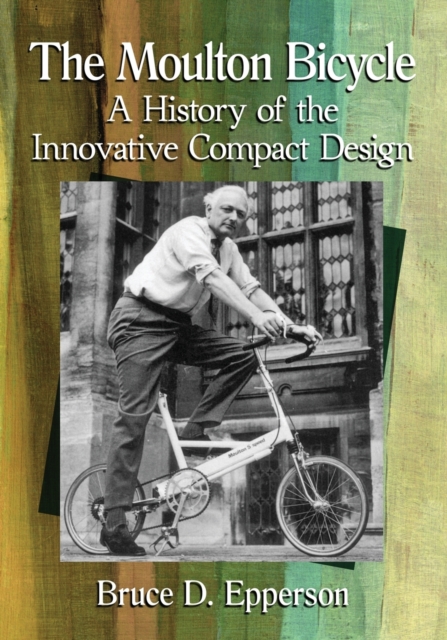
The Moulton Bicycle : A History of the Innovative Compact Design Paperback / softback
by Bruce D. Epperson
Paperback / softback
Description
In November 1963, a British inventor and reluctant industrialist named Alex Moulton introduced a radical new small-wheeled, dual suspension bicycle at the Earl’s Court Cycle Show in London.
It was covered in several articles by Reyner Banham, an architecture and design critic and associate editor of Architectural Review and Architects’ Journal.
Banham believed that the Moulton Bicycle would give rise to “a new class of cyclists,†young urban radicals who would cycle out of choice, and not out of need, the traditional clientele for the bicycle industry prior to the war.
After selling about 100,000 units Moulton was forced by economic circumstances to sell his small firm to Raleigh, England’s largest cycle maker, in 1967.
Production of the original ended in 1970. Alex Moulton revived his firm in the 1980’s with an even more radical spaceframe model, the AM, that remains in production even after Alex Moulton’s death in 2015. Largely because of Banham’s writings, the Moulton has started to be taken seriously by technological historians and industrial design historians.
The AM series is very expensive - some models cost over $15,000—and this has led some mechanically savvy cyclists to make their own “hot rod†compact bicycles out of the small wheeled, relatively inexpensive, utility bicycles of the 1970s (called “Shoppersâ€) that were inspired by the Moulton’s small-wheeled popularity.
Ironically, this was also foreseen by Banham (who died in 1988), who considered the hot-rod Model Ts and Chevy Bel Aires of the 1950s “America’s first folk art of the mechanical era.†This book follows the intertwined lives of two very different men, both unusually creative, who had an extraordinary impact on each others’ careers, given that they met, at most, three or four times, and never had a professional relationship of any kind.
Information
-
Out of stock
- Format:Paperback / softback
- Pages:229 pages, 61 photographs
- Publisher:McFarland & Co Inc
- Publication Date:30/06/2018
- Category:
- ISBN:9781476673257
Information
-
Out of stock
- Format:Paperback / softback
- Pages:229 pages, 61 photographs
- Publisher:McFarland & Co Inc
- Publication Date:30/06/2018
- Category:
- ISBN:9781476673257






